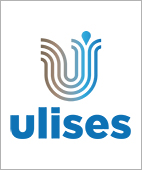
LIFE Project: Modernization of wastewater treatment plants using innovative, low-cost technologies for energy self-sufficiency and complete recycling
- Type Project
- Status Filled
- Execution 2019 -2023
- Assigned Budget 1.902.784,00 €
- Scope Europeo
- Autonomous community Madrid, Comunidad de
- Main source of financing LIFE
- Project website Web del proyecto
Wastewater treatment plant (WWTP) sludge is a good source of nutrients and organic matter for agricultural purposes, but its use in agriculture still raises many concerns due to the possible presence of heavy metals, emerging contaminants, or pathogens.
The LIFE ULISES project aims to demonstrate a set of technologies to improve the resource efficiency of wastewater treatment plants at a pilot plant in El Bobar (Almería, Spain).
In Europe, up to 40 billion m3 of municipal wastewater are generated annually, but currently only around 1 billion m3 of this wastewater is reused, mainly due to the high costs of conventional tertiary treatment required to meet strict quality requirements, especially for agricultural irrigation. Wastewater treatment accounts for an energy consumption of 0.5 kWh/m3 (equivalent to the energy generation of two nuclear power plants), more than 27 million tons of CO2e/year, and 3.5 million tons of sewage sludge that must be managed by plant operators. This wastewater has significant energy and resource potential, mostly derived from the organic matter in sewage sludge.
Currently, this organic matter is only partially recovered in the form of biogas. While Europe produced 2.5 million m3 of biogas from sewage sludge in 2016, approximately 15% of the potential biogas was burned in disposal burners. Sewage sludge is a good source of nutrients and organic matter for agricultural purposes, but its use in agriculture still raises many concerns due to the potential presence of heavy metals, emerging contaminants, or pathogens.
- Revolutionizing conventional treatment processes through a set of innovative technologies that enable the production of valuable resources, such as vehicle biofuel, agricultural biofertilizers, and reusable water, from wastewater.
- Recover bioenergy from sludge, producing vehicle biofuel (GAS LINE).
- Reduce energy consumption in the biological process through: (WATER LINE).
- Water reuse through solar disinfection process (WATER LINE).
- Obtain quality biofertilizers from digested and concentrated sludge (SLUDGE LINE).
- Minimizing the carbon footprint of a wastewater treatment process by conducting a comprehensive LCA study of the plant.
A set of technologies to improve the resource efficiency of wastewater treatment plants, enabling the production of valuable resources such as biofuels for use in vehicles, agricultural biofertilizers, and water suitable for reuse from wastewater:
- Biogas enrichment with the ABAD Bioenergy® system to produce a renewable biofuel for vehicles.
- PUSH anaerobic pretreatment combined with an advanced aeration control system to halve energy consumption in the treatment process.
- Disinfection treatments using Fenton and Fresnel photovoltaic solar collectors to produce recycled water for reuse in irrigation.
- Enzymatic hydrolysis treatment of sludge to obtain a high-quality agricultural biofertilizer.
- Technology for the recovery of struvite from centrifuges using an osmosis-based process.
- Coordinator/entity name: Frank Rogalla
Postal address: Federico Salmón 13, 28050, Madrid
The final figures achieved by the demonstration plant are as follows:
- 237,689.8 m3/y of reclaimed water that can be used in agriculture;
- Renewable energy production of 99.6 MWh/yr (biomethane production + energy recovered through biogas recovery);
- 45,377 kgCO2/yr of emissions reduction due to water savings thanks to the reuse of water for irrigation, and therefore water that does not need to be treated and remains available for use.
Some of the benefits obtained:
- Reduction of 4,635 tons per year of GHG emitted by WWTP (CO2 eq);
- Reduction of GHG emissions from transportation: 96% CO2 eq (from well to wheels); 99% CO2 eq (from tank to wheels); 94% N2O (from tank to wheels);
- Reduction in transport emissions: 82% particulate matter; 93% NOx; 100% SOx;
- Reduction of 4 log CFU (colony forming units) in the pathogen content of E. coli water.
- FCC Aqualia S.A
- UAL-CIESOL(UNIVERSITY OF ALMERIA)
- EnergyLab(FUNDACIóN CENTRO TECNOLóXICO DE EFICIENCIA E SOSTENIBILIDADE ENERXéTICA)
- CETIM(Fundación Centro Tecnológico de Investigación Multisectorial)







